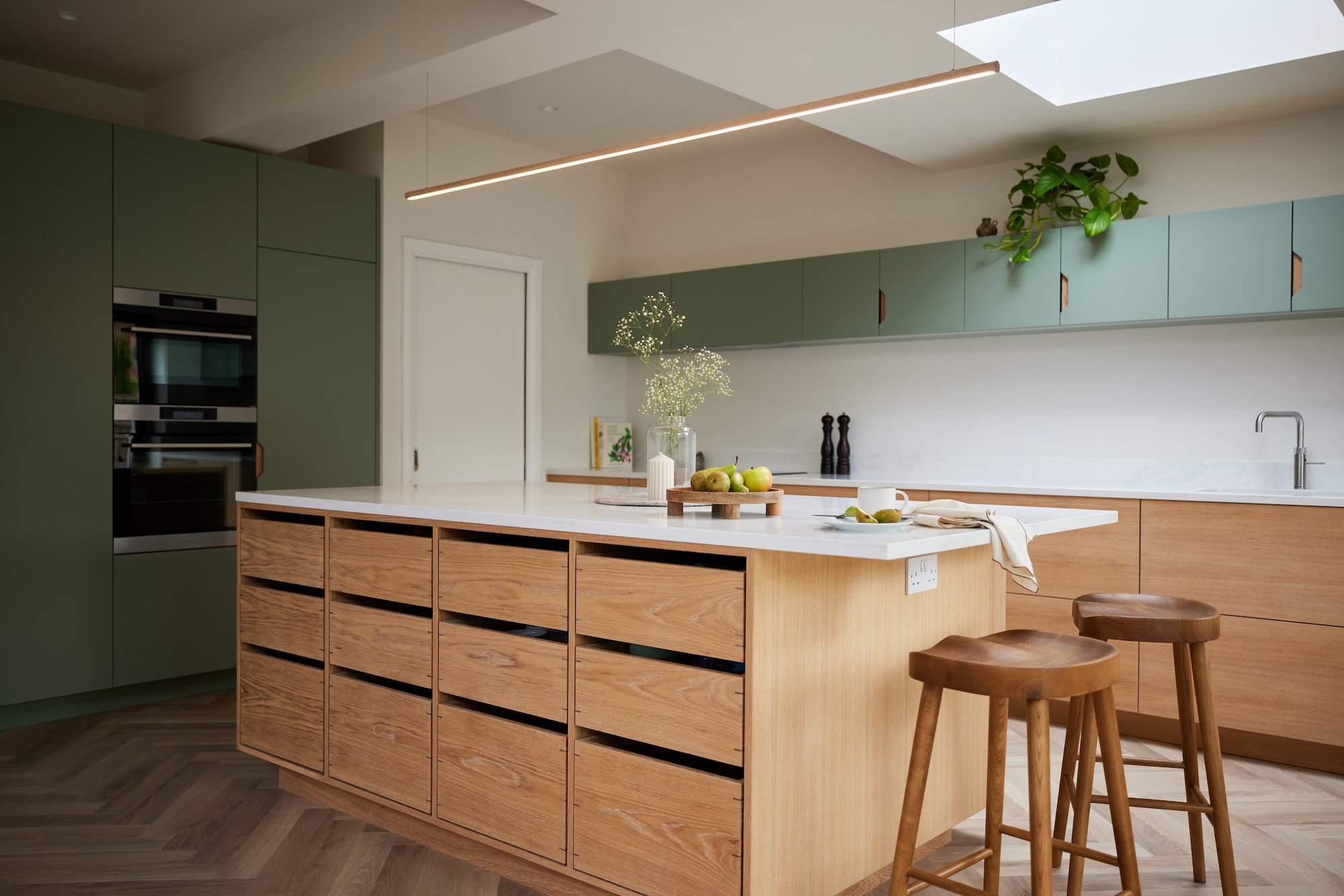Designing a Child-Friendly Kitchen: Creative Ideas for Fun and Functionality
Designing a child-friendly kitchen requires a blend of creativity and practicality. It's essential to consider floor plans, surface materials, and the height of appliances, while also prioritising safety and providing space for children to learn and grow. A safe and enjoyable kitchen environment can greatly benefit the entire family, as it fosters bonding and engagement between parents or guardians and children during cooking activities.
This article will explore creative ideas for developing a practical and enjoyable kitchen design that caters to both adults and children.

Open-Plan Kitchens
An open-plan kitchen is an excellent way to create a fun and safe environment for the entire family.
This design improves visibility, allowing you to keep an eye on your kids while you're preparing and cooking meals. Additionally, it enhances communication, encourages family bonding and increases a child's overall sense of belonging and security. An open-plan kitchen also provides more space for lounge furniture and for children to play and entertain themselves while waiting for their meals.
Family-Friendly Surface
When designing a child-friendly kitchen, it's important to select surfaces and materials that are wipeable, hygienic, and durable since children can be quite clumsy and messy.
Quartz countertops are a great option for a child-friendly kitchen design because they are highly durable and resistant to chips and scratches. Additionally, quartz is non-porous, which makes it resistant to stains and bacterial growth. Consider using countertops with rounded edges and handleless cabinets to reduce the risk of injury if a child bumps into them.
Since children are naturally curious and tend to get into everything, it's essential to install childproof locks on cabinets and drawers to keep cleaning products, washing powders, and sharp appliances out of reach.
Furthermore, because kids like to run around, choosing non-slip flooring is crucial. Materials such as cork, rubber, or textured vinyl are excellent options to help reduce the risk of slips and falls.
Kitchen Island
Children are naturally curious, which is why the kitchen island is a popular choice for many young families looking to create a child-friendly kitchen environment. It offers a safe separation from dangerous cooking areas while also adding a stylish touch to the kitchen.
By placing stools on the safe side of the island, children can easily see what's happening in the cooking area, allowing them to learn and engage with the process. Additionally, the island serves as a perfect space for kids to play or do their homework while you continue to prepare and cook. Always keep in mind a child's height off the floor when designing the setup.
Dedicated Areas for the Children
Children love to feel grown-up and involved in activities. Creating a dedicated area for your children can help them channel their independent energy and develop their organisational skills.
Consider setting up a space where your children can store their items. For instance, you might lower a section of the countertop to a child-friendly height and purchase child-sized kitchen tools, allowing them to assist with dinner preparation in a fun and engaging way.
You might also include a built-in snack station along with child-sized chairs and a table to make healthy eating a more enjoyable experience, ensuring they get their five servings of fruits and vegetables a day.
Child-Friendly Appliances
One of the key aspects of a child's cognitive development is tactile learning. However, not every area in a kitchen is safe for a child to touch. Therefore, when designing a child-friendly kitchen, it's essential to think about the placement of kitchen appliances.
Positioning ovens, grills, and microwaves at eye level can reduce the chances of young children playing with switches or opening doors, thereby minimising the risk of burns.
Instead of using a gas cooker with an open flame, consider choosing an induction hob, which is much safer. Induction cooktops have a lower risk of causing fires or accidental burns.
Fun and Quirky Décor
Bright and bold colours naturally stimulate children's senses and creativity. Therefore, opt for vibrant colours and attractive patterns when decorating your child-friendly kitchen.
These lively colours are also connected to improved moods, so incorporating a range of vibrant hues into the kitchen can create a positive and safe environment for everyone to enjoy.
One unique idea is to install a chalkboard wall. This adds a fun element to the space without taking up extra room. Your children can feel more involved in planning by writing messages like grocery lists or weekly menus on the wall while you cook.
Seeking Professional Help
A bespoke kitchen maximises available space by being tailored to fit your specific dimensions, ensuring optimal efficiency and practicality.
Hiring a bespoke kitchen designer can help you create a custom kitchen that reflects your unique preferences. This will make the space safe, enjoyable, and functional for you and your children to fully appreciate.
About the Author
Sam Boyes
Sam has worked in electrical, furniture and spatial design for over a decade. He brings a wealth of ideas and experience, setting the tone of a team that really cares about creating the most long-lasting and quality solution to whatever challenge is presented to them. Sam’s attention to detail, holistic approach to design, and efficient project management sets Boyes Design apart.



